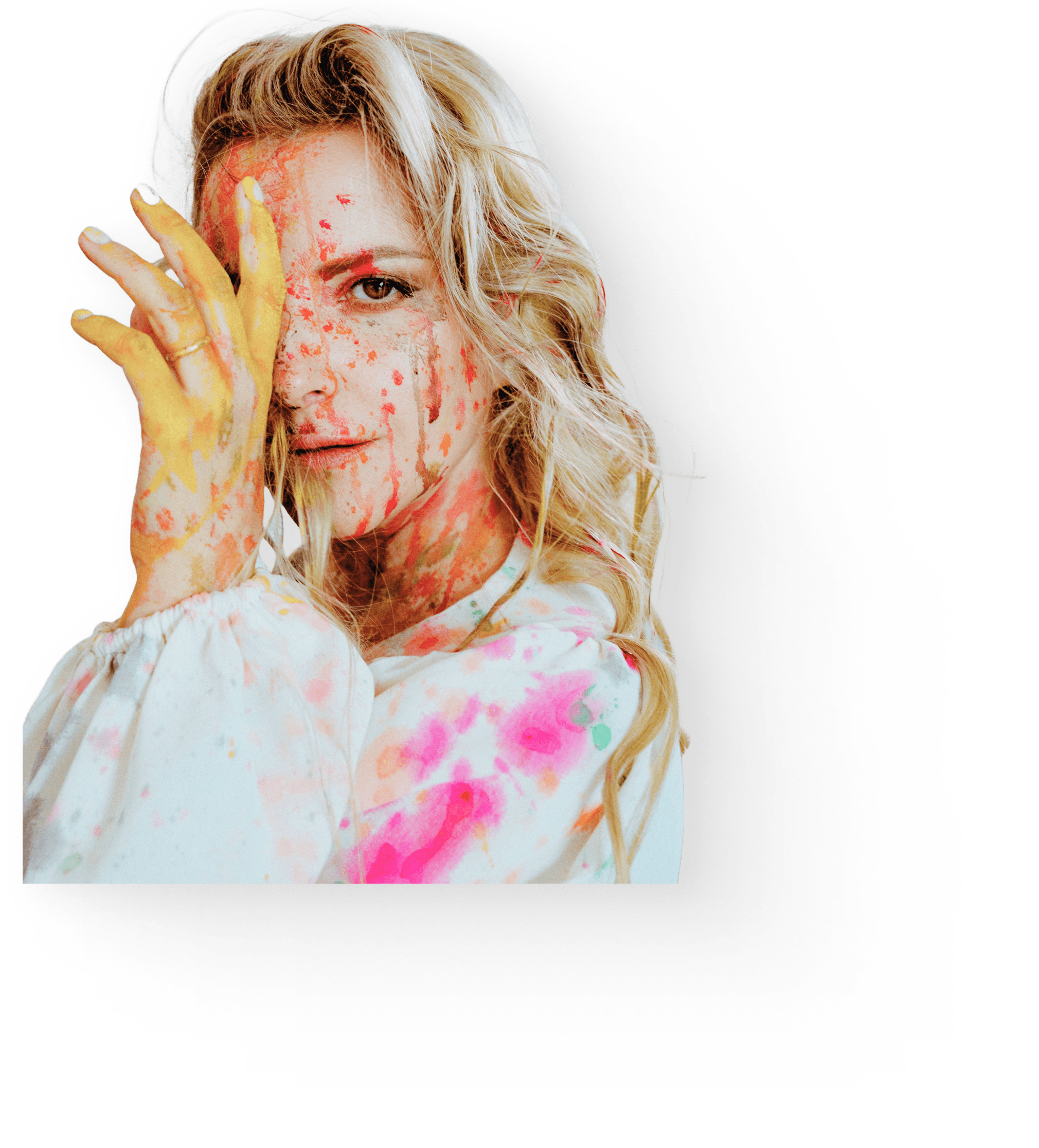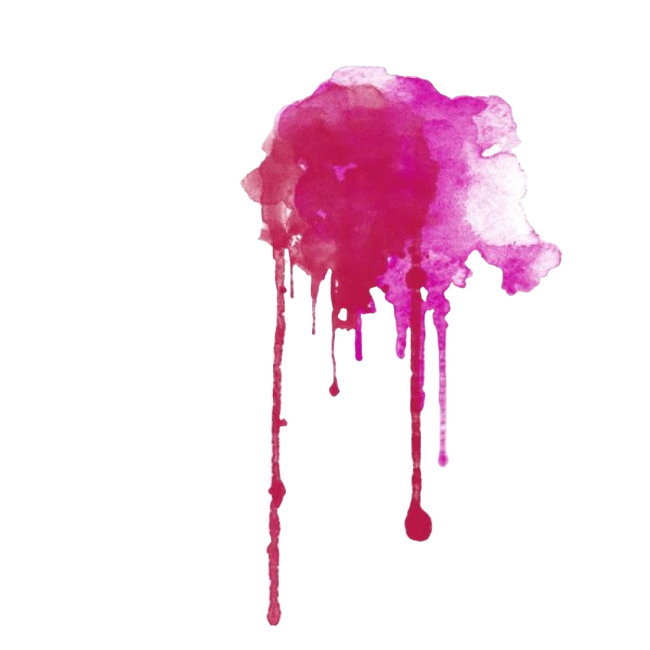



PIGMENTOLOGY

duration: 5 weeks | START: 2 of april
PRACTICAL ONLINE COURSE BY POLINA SONNTAG
A BREAKTHROUGH IN THE PERMANENT
5-week programme to improve your skills
and move from intuitive to conscious working, thanks to readymade solutions, algorithms and schemes for working withPM pigments. For your attention! course materials will opened module by module during 5 weeks of the official launch date. The course materials are not available at once.
and move from intuitive to conscious working, thanks to readymade solutions, algorithms and schemes for working withPM pigments. For your attention! course materials will opened module by module during 5 weeks of the official launch date. The course materials are not available at once.
duration: 5 weeks
START: 25 OF MARCH
START: 25 OF MARCH
PRACTICAL ONLINE COURSE
BY POLINA SONNTAG
BY POLINA SONNTAG
A 5-week programme to improve your skills and move from intuitive to conscious working, thanks to readymade solutions, algorithms and schemes for working with PM pigments.
SMART PMU
Who should take this course?
After a basic course with one set of equipment, pigments and techniques to them, do not know where to go next and how to work with other pigments, equipment and in other techniques.
PMU NOVELLEN
MASTER
MASTER
CRAFTS MASTER WITH EXPERIENCE
TO THE MASTERS, READY FOR THE LEAP INTO COACHING
For masters of permanent, who are tired of working "at random", and who want to know clear algorithms and schemes for selecting pigments for work, as well as techniques, equipment for them.
Who are tired of experimenting in search of the perfect combination: client-pigmentequipment and technique, giving an opportunity for growth of skills, quality of services and high cheques.
Those who are confident in several techniques, have built up a portfolio, but lack the knowledge of why the same pigment behaves differently with each master?
Can you feel the pain ?
The pain of feeling stuck in a place, afraid to pick up the cheque for the service, knowing you can do more. But the fear of hurting the client, of making a mistake, of an unpredictable outcome, prevents you from moving forward

01
No satisfaction with my work: it's either my fault or the pigment or the needle is failing. Or maybe it's the client's skin?
02
Not sure where
to order pigments, who to buy from?
to order pigments, who to buy from?
Not sure where to order pigments, who to buy from?
03
You learn, you learn, but you are not sure which pigment to choose for this or that client.
04
Not sure about the residue, afraid to mess up your face, afraid to work on your eyelids, not able to colour your lips inside.
05
Once you've completed the PMU basic course, you realise that there's a serious lack of knowledge, that the pigments, machines and needles you've been handling are only suitable for a specific skin type and for a specific job.
But you know masters who work easily in different techniques, with different equipment and almost any pigments, and get amazing "healed PMU result". Their cheque is 2 or 3 times higher than yours, but they have no shortage of customers!

What can help you?
This is a course on how to improve your skills and move from intuitive to conscious working in 3 weeks, thanks to ready-made solutions, algorithms and schemes for working with PM pigments.
In 4 weeks training you will:
Study PMU pigment composition
Learn how to diagnose pigment residue after 2 years
Understand the nature of different pigment structures
Know how different pigment structures behaviour in different skin types
Learn which components in pigments help or hinder their penetration into the skin
What influences a dense or transparent heald result?
What technique and equipment to choose for different pigments and type of skin
Get the tools you need to analyse your work in depth
In 4 weeks you can:
Analyse pigment formulations
Correctly select pigments for the client's skin type
Select the correct application technique and equipment
Eliminate all your questions, fears and myths about permanent pigments
Give you the confidence to work in a high check
Help you to analyse your work in depth
Allow you not to make any mistakes
Increase the number of your clients
Techniques, equipment and needles are the tip of the iceberg of beautiful work in permanent, only 20% of the result.
The other 80% lies deeper - in the right choice of pigments for the job, depending on the client's skin type and the tasks you are undertaking, followed by the choice of techniques and equipment.
WHAT'S INCLUDED IN THE COURSE?


01
Duration: 4-5 weeks
Course work hours Volume 40-60
Course work hours Volume 40-60
02
9-12 Live Lessons in webinar room &
video records of this lesson to review
video records of this lesson to review
03
Notes, outlie, Manual in pdf
to download per google links
to download per google links
04
Support in Training Telegram Chat
from 25 March till 25 of Jun 2024
from 25 March till 25 of Jun 2024
05
Homework management at ZOOM
with a mentor trainer Polina Sonntag
with a mentor trainer Polina Sonntag
06
Mentor coach support in Telegram
Chat to share experiences, supportand feedback.
Chat to share experiences, supportand feedback.
05
Certificate of Completion
Personal certificate after successful completion of the course
Scroll to the left

LET'S GO!

01
Duration: 4-5 weeks
Course work hours Volume 40
Course work hours Volume 40

02
9-12 Live Lessons in webinar room & video records of this lesson to review

03
Notes, outlie, Manual in pdf
to download per google links
to download per google links

04
Support in Training Telegram Chat from 15 January till 15 of April 2024

05
Homework management at ZOOM with a mentor trainer Polina Sonntag

06
Mentor coach support in Telegram Chat to share experiences, supportandfeedback.
07
Personal certificate after successful completion of the course
Your result
Do you want to become a master who, thanks to his knowledge of pigments, made a step forward in the field of permanent make up and
Found your ideal product: the pigment, the machine, the needles, suitable for the technique
in which you work, and also the pigment formula (composition) suitable for the maximum number
of your customers in terms of colour and texture.
in which you work, and also the pigment formula (composition) suitable for the maximum number
of your customers in terms of colour and texture.
Have set up for yourselves a logic for the selection of the pigment for each customer.
Know which pigments are safe and where to buy them
Know how to mix pigments correctly and choose the right needle, device and implantation technique.
Sure of how to control colour temperature for each customer request
Sure of the result of the process
Have found a balance with the amount of pigment that's just enough and not too much.
Confident with your technique for all areas: lips, eyeliner, eyebrows
Reduce procedure time, expand your services and increase your revenue by learning the finer details of implant techniques.
Have a portfolio of beautiful work
Feel competitive: Get a foothold in the PMU market
Found your ideal product: the pigment,
the machine, the needles, suitable for the technique in which you work, and also the pigment formula (composition) suitable for the maximum number of your customers in terms of colour and texture.
the machine, the needles, suitable for the technique in which you work, and also the pigment formula (composition) suitable for the maximum number of your customers in terms of colour and texture.
PROGRAMME
Smart PMU PIGMENTOLOGY by Polina Sonntag

The nature of pigments and their appearance in the skin
MODULE 1
The nature of pigments and their appearance in the skin
THE CONTENT OF THE MODULE:
Lesson 1
• Where do the colours in permanent make-up come from and how are they collected?
• Знаете как избежать холодных, белёсых
и других нежелательных остатков остатков,
а так же как работать с такими остатками: грамотно перекрыть или удалить
и других нежелательных остатков остатков,
а так же как работать с такими остатками: грамотно перекрыть или удалить
Chemical characteristics of PMU shade formulations and how this affects implantation rate and outcome
• Pigments, dyes and varnishes in permanent make-up, their properties, characteristics, principle of their presence in the skin.
• Cosmetic base of pigments and its influence on the penetration of pigments into the skin and on the residue.
• What are minerals, hybrids, organics, inorganics, their concentration, grinding, lightness/darkness, how do they affect the pigment residue in the skin and at what depth and with what techniques is it correct to work with them.
Lesson 2
• What information about the pigments you can be found on the label? What do the CAS and CI designations mean?
Tools for the correct technical diagnosis of all brands of permanent make-up pigments in order to achieve the best results in your work.
• How can the CI colour indices on the label be used to determine the colour of the pigments?
• Which CI indices hide the most persistent and dominant pigments that never leave the skin and need to be removed?
• How do you know from the label that the pigment will not change colour to red, blue, grey, green in one year?
Lesson 3
• The physics of colour: hues, tones and colour temperature of pigments, the functions of each colour and their dominance over each other.
The physics of colour: which pigments mix well together and how to apply correctors and mix pigments.
• How to correctly form the hues of pigments
• How to mix pigments, including different brands, and how to choose correctors.
• Why pigments remain in the skin in cold colours, how to avoid grey eyebrows, blue arrows and black lips.
• What to do about whitish residue? If they don't go away, how do you camouflage them without adding more white pigment to the skin? Are there any pigments without white in their composition?
03.04.2024 18:00 Paris time Review of homework for module 1
MODULE RESULT
• Confidence in the choice of equipment and implantation techniques for pigmentation
• Accurately predict the remaining balance.
• Know which pigments will come out and which will need to be removed
• Know how to avoid cold, whitish and other unwanted residue, and how to deal with it: how to cover it up or remove it.
AUXILIARY MATERIALS
• Leaflet_Properties of colouring agents
• Memo_Classification and description of cosmetic pigment bases
• Colour chart_Palette of PM pigments by CI_Ru numbers
• Tutorial_Mixing Rules and Basic Formulas of Pigments in Permanent Make-up
• Leaflet_Diagnosis of pigmented residue in
the skin after permanent makeup
procedures
the skin after permanent makeup
procedures
How to correctly diagnose the client's skin condition and select pigments with different structures to suit the colour and type of skin and safety of pigments.

MODULE 2
How to correctly diagnose the client's skin condition and select pigments with different structures to suit the colour and type of skin and safety of pigments.
MODULE 2
How to correctly diagnose the client's skin condition and select pigments with different structures to suit the colour and type of skin and safety of pigments.
THE CONTENT OF THE MODULE:
Lesson 4
• What pigments in our skin give it its colour, tone and shade?
Diagnosis of the client's skin and technique of matching colourants to skin phototypes
• What types of melanin, keratin and haemoglobin are produced in the skin?
• What influences the colour changes of the natural pigments in the skin?
• What are the different skin photo types?
Lesson 6
• Characteristics of each phototype
• How do the skin's natural pigments appear in each phototype?
Pigment safety - a master's peace of mind
• How to choose and mix pigments for each phototype
Lesson 5
Skin types of the client and how this affects the colour of the permanent make-up
• How to apply pigments correctly and to what depth to get a stable good residue?
• What are the peculiarities of pigment application according to
• Depending on the skin type as determined by the amount of sebum?
• How does skin pH affect the quality and technique of pigment application?
• Which pigments to use:
• Oily, thick, porous skin,
• normal skin, dry skin, dense skin, poreless skin
• thin and flaccid, capillary.
• On which skin the pigment will be red, on which skin it will be grey or blue.
10.04.2024 17:00 Paris time Review of homework for module 2
MODULE RESULT
• Confidently diagnose the client's skin
• Properly select and mix the required pigments
• To match your skin tone exactly
• Work only with safe and approved pigments
AUXILIARY MATERIALS
• Note_Technology of colour matching to skin phototypes
• Brochure_ Diagnosis of the client's skin condition
before the PMU procedure
before the PMU procedure
• List of safe pigments in Europa
• Tattoo-pigments-and-inks-regulation-and- challenges-us-fda_EN
• What is a true pigment allergy?
• Which pigment ingredients can cause allergies and what to look for in pigments?
• How to find out about it on the pigment label
• Which pigments cause allergies to nickel, chromium
• REACH reform - what is safe to work with in Europe? List of safe pigments
• Comparison of European REACH and American FDA
• Protect yourself from claims from customers
and regulatory authorities
and regulatory authorities
How to choose the right device, needle, handpiece, technique of pigmentk: implantation for different type of skin and pigments

MODULE 3
How to choose the right device, needle, handpiece, technique of pigmentk: implantation for different type of skin and pigments
MODULE 3
How to choose the right device, needle, handpiece, technique of pigmentk: implantation for different type of skin and pigments
THE CONTENT OF THE MODULE:
Lesson 7
Pigment implantation process and types of devices
Lesson 9
We match implantation equipment and techniques to different skin types and pigments
Lesson 8
Types of permanent makeup needles and cartridges
• Technique, needle, equipment, speed when working with mineral pigments for better styling and perfect residue
• Types of permanent makeup needles: sharpening, tips, configurations
• How to work with hybrid and organic pigments - the differences in working with them
• How to work with thin skin without blemishes and wrinkles?
• How to find the right balance between enough residue but not too much.
• How cartridges differ in hardness: Laner needles VS shaders.
• What to do if the pigment does not penetrate the skin?
• Does it make sense to work with textured needles?
• Disassembly: needle, arm, hand and block speed, working angle for different working areas, skin types and pigments.
17.04.2024 19:00 Paris time Review of homework for module 2
MODULE RESULT
• Confidently match the equipment to
• client's skin type
• pigment type
• What is the process of implanting pigment into the skin
• different implant techniques
• Types of operating unit in PMU: Liners VS Shaders
AUXILIARY MATERIALS
• Brochure : Types of equipment in
permanent makeup
permanent makeup
• Types of handpiece in PMU: short-stroke, middle-stroke, long-stroke - differences in operation
• Leaflet: Types of needles in permanent make-up
• How the needle stroke affects the quality of work and the healed result
• Outline: how to choose needles, blocks of manipulators for the client's skin and types of pigments
• How to choose the right diluent to improve pigment penetration into the skin?
Removal of pigments, various products, methods of removal and algorithms.

MODULE 4
Removal of pigments, various products, methods of removal and algorithms.
MODULE 4
Removal of pigments, various products, methods of removal and algorithms.
THE CONTENT OF THE MODULE:
Lesson 10
Paris time Composition of alkaline, acid and salt removers and the specifics of their effect on the skin and its pigments
Lesson 12
Combined removal techniques: Laser + Remover
• Principles of laser operation with different pigments: iron oxides, organic-synthetic, carbon black, titanium dioxide, chromium oxide and hydroxide.
• Diagnosis of pigment remaining in the skin and the choice of removal scheme
24.04.2024 17:00 Paris time Review of homework for module 4
• When it is better to start with laser removal and when it is better to use a remover first
• How to remove green, red, yellow eyebrows after laser removal
• The principle of work of alkalis in the skin and with pigments
• Types of acids and the principle of their work in the skin and with pigments
• Principle of work of salts in the skin and with pigments
• How to distinguish removers by their power and speed of removal in order to choose a technique and calculate the number of procedures.
Lesson 11
Algorithm for using different removers to obtain the least trauma and the best result.
MODULE RESULT
• Diagnosis of skin type and condition to choose the right composition of remover
• Know which type of remover to use based on its composition
• Know which removers are effective and how they work individually.
• How to combine different removers in the same procedure.
• Right selection of needle, manipulator and removal technique
• different implant techniques
AUXILIARY MATERIALS
• Step-by-step work with acid removers
• Table analysing 35 different branded removers
• Safe step-by-step removal with biphasic removers
• Protocol: Work step by step with alkaline, acid and salt removal in one procedure
• Anaesthesia and Aftercare during and after the removal procedure
• Declaration of consentContract-Agreement for the removal procedurePermanent Make-up/Tattoo removal
• How to work with removers that cause the least trauma and achieve the best results.
• Know when to use a laser
• How to diagnose pigment remaining in the skin and select different laser and removal scheme
• Leaflet: Diagnosis of pigment remaining in the skin
• Outline: Types of different remover


SELECT PARTICIPATION TARIFF
••Module 1
••Module 2
••Module 3
1.680 €
••Module 4
Best price for early booking 19.03.2024- 23:59 Paris time
BREAKTHROUGH
DURATION: 5 weeks
••60 hours of training including homework
••4 Moduls, video recorded lessons in English for each module review at any time
••Bonus video lessons from guest speakers: Valeria Vasilyeva, Karina Irklienko, Marika Suhaya
••Learning platform: GetCourse
••Each module is opened on the platform once a week
•• Notes, outlie, Manual in pdf to download per google links
•• 4 group meetings at ZOOM with Polina Sonntag for homework review
•• 3 moth support in group closed Telegram Chat by Polina Sonntag from 25 of March till 25 of Juny 2024
•• Certificate of Completion of training
•• ACCESS TO COURSE MATHERIAL: 6 months till 25 of September 2024
TRANSFORMATION
DURATION: 4 weeks
••Module 1
••Module 2
875 €
••Module 3
Best price for early booking 19.03.2024- 23:59 Paris time
••40 hours of training including homework
••3 Moduls, video recorded lessons in English for each module review at any time
••Possibility to get access to bonus lessons of Valeria Vasilyeva, Karina Irklienko, Marika Suhaya with points earned through homework.
••Learning platform: GetCourse
••Each module is opened on the platform once a week
•• Notes, outlie, Manual in pdf to download on the platform
•• Review of the homework assignments and written feedback from the trainer assistant through the GetCourse platform from March 25 to April 25, 2024
•• 1 month support in group closed Telegram Chat by the trainer assistant from 25 of March till 25 of April 25, 2024
•• Certificate of Completion of training
•• ACCESS TO COURSE MATHERIAL: 3 months till 25 of Jun 2024
3.850 €
PMU QUEEN
DURATION: 5 weeks
Best price for early booking 19.03.2024- 23:59 Paris time
••Module 1
••Module 2
••Module 3
••Module 4
••60 hours of training including homework
••4 Moduls, video recorded lessons in English for each module review at any time
••Bonus video lessons from guest speakers:Valeria Vasilyeva, Karina Irklienko, Marika Suhaya
••Learning platform: GetCourse
••Each module is opened on the platform once a week
•• Notes, outlie, Manual in pdf to download per google links
•• 4 Peronal meetings at ZOOM with Polina Sonntag for homework review
•• 3 month support in Peronal Telegram Chat with Polina Sonntag from 25 March till 25 of June 2024
•• Certificate of Completion of training
•• ACCESS TO COURSE MATHERIAL: 12 months till 25 of March 2025
Bonus video lessons from guest speakers
Access after 100% prepayment
Valeria Vasilyeva

••WULOP World Champion 2022
••Silver World Champion 2021
••Belarusian Champion 2021
••Austrian Champion 2022
••Top trainer & Henson Master
••Speaker at international congresses
••Judge at World Championships
••Creator of permanent make-up ••video trainings & manuals
••Partner of the largest ••manufacturers of permanent ••makeup equipment and pigments
Karina Irklienko

••WULOP World Champion 2022
••Ukrainian Champion 2022
••International Trainer & Speaker
••Judge at World Championships
••Author of the "Champion Eyebrows" ••& "Barhat Lips" algorithms
Marika Suhaya

••Worldwide knowing PMU Atist
••Talent GREEN CARD awarded in USA
••International Trainer & Speaker
••Judge at World Championships
••Author of the technique „WOW LIPS“
••Pioneer and author of the most ••extensive online training in ••permanent make-up
POLINA SONNTAG
AUTHOR AND COURSE CREATOR
Developer and creator of PMU pigments for permanent make-up under the brand Smartyline
Recognised international expert in the production and formulation of permanent make-up pigments
Speaker and participant of more than 30 permanent makeup conferences worldweit.
Invited speaker of Global Permanent and Evolution in Russia
Author of the offline and online course "Pigmentology and Colorimetry in Permanent Makeup" since 2019
She has trained and graduated about 3000 students - masters of permanent make-up, PMU trainers and pigment manufacturers Russian- and English-speaking.


Student feedback
Frequent questions
The programme is delivered online in Telegramm Chanel. You will have Live lessons, Video Records, Manual, Notes, homework and you will be assigned a mentor Polina Sonntag to help you through the course.
I have chosen for you only the most important and necessary parameters from chemistry and physics, which I will help you to apply immediately in your practical work. I have been working on this programme for two years, and if other students have succeeded, you will too.
Yes. The training is structured so that you have time not only to learn, but also to apply the knowledge and tools you have learned.
The programme is delivered online in Telegramm Chanel. You will have Live lessons, Video Records, Manual, Notes, homework and you will be assigned a mentor Polina Sonntag to help you through the course.
I have chosen for you only the most important and necessary parameters from chemistry and physics, which I will help you to apply immediately in your practical work. I have been working on this programme for two years, and if other students have succeeded, you will too.
Yes. The training is structured so that you have time not only to learn, but also to apply the knowledge and tools you have learned.
Polina Staroverova
Haus 219b, 6232 Münster, Österreich
E-Mail: polina.sonntag@gmx.at
Mob. +436641035512
Steure Nr. 83 134/7265
UID: ATU68931702






